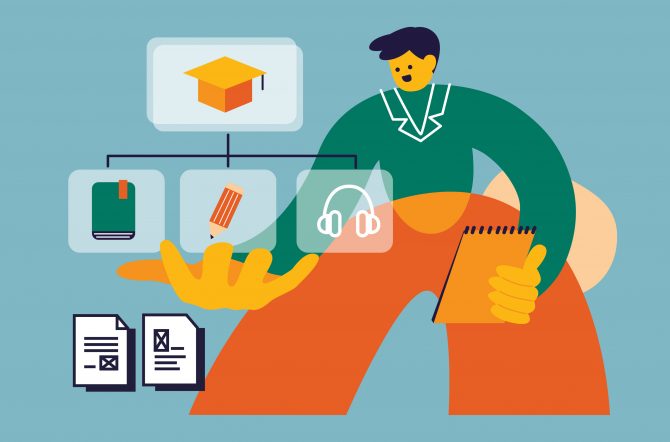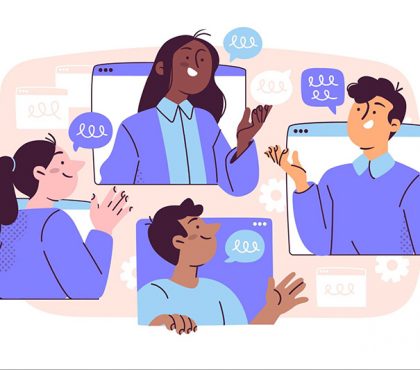Microlearning is not a new concept. It has been around for years as an efficient learning approach for adults, who take the training for their needs. Has your organization made the most of microlearning to enhance the effectiveness of learning and development activities? We’ll share some microlearning strategies that work most for corporate training, recommended by experienced consultants of F.Learning. Check it out and complete your plan.
Benefits of appropriate microlearning strategies
The Microlearning method delivers knowledge into a series of short and frequent lessons of 3-6 minutes long or even shorter. Each focuses on a specific topic and aims at meeting a specific learning objective.
Compared to hours-long traditional training courses, microlearning is much more advantageous. Implementing proper microlearning strategies can benefit your organization as:
- Employees have to remember smaller pieces of information each time. As a result, they’re likely to keep it in mind longer.
- Microlearning contents give employees information or knowledge for a particular problem or question. And when employed can get the answers they need, they will be more engaged with the training content.
- As employees can apply what they have learned on the job, it helps to boost productivity for your business.
- Microlearning is a part of learning in the flow of work approach. That means it works ideally with the busy timetable of your employees.
- Microlearning leverages employee learning experience, as well as a positive learning culture for your organization.
6 microlearning strategies for successful corporate training
Microlearning is more than just how to make shorter content for your corporate training programs. You need to apply some structure, or how learners go through lessons so that the training becomes fully effective. Besides, adaptive learning and personalization are also a must in modern microlearning strategies.
To go into detail, here are six microlearning strategies that help your L&D team to deliver successful training programs
- Always be learner-centered
- Choose the suitable medium for microlearning assets
- Use the right learning platform
- Incorporate AI
- Make the course mobile-friendly
- Ask employees to develop microlearning content
#1 Always be learner-centered
Microlearning, or any employee training generally, aims to meet knowledge demands on their work. Thus, it’s critical to focus on your employees and their needs from the learning experience. Only then can you create a microlearning course as the right solution to meet their needs.
To ensure your courses are learner-focused, continually as the following questions when you are designing the course:
- What is the most important knowledge or skills employees need?
- Will they find those resources helpful?
- Can employees want to join the training on a busy day?
In practice, there are some company or industry-related topics such as compliance or new policy implementation. Even that, try to make the training as learner-focused as possible by using our recommended questions.
#2 Choose the suitable medium for microlearning assets
There is a typical misconception that microlearning means always using eLearning with the video format. Video can be – the most popular form, however, is not the only one. Microlearning can take a wider range of forms, including
- Video
- Infographic
- Podcast
- Text-based, such as a newsletter by email or a PDF file.
By broadening your options you can consider more interesting ways to reach and engage your employees. So do not just limit your choice with video.
Recommended reading:
#3 Use the right learning platform
We highly recommend your L&D team uses software to implement microlearning for the best management and evaluation. The platform should allow you to host and share the content, track the learning process, and automatically generate regular reports.
You can use a specific platform for microlearning or any other learning management system (LMS), a learning experience platform. This depends on your requirements and budget as well.
In case you’re struggling with many options, check our top picks for each type of platform at
#4 Incorporate AI
AI, or Artificial Intelligence, has an increasing impact on L&D activities, especially in tech-savvy companies. According to a Gartner CIO Survey, the implementation of AI has increased by 270% over the past four years. In 2021, AI-based technologies also account for 80% of all types.
So try to make AI a part of your microlearning strategies. Below are what AI can help to transform your training programs:
- Personalizing learning experience. Use AI to suggest the next pieces of content for each employee based on their own interest, needs, or performances.
- Making advanced analytics. AI helps you to quickly and continually collect huge amounts of data, analyze to identify the trends of learning. They can be the favorite content, average performance, frequent struggling points, or even the attendance issues. Those reports make it easier for the L&D team to find solutions to optimize the training.
- Creating content in less time. AI tools can help you reduce the time to produce multi-language or localized content from months to days.
#4 Make the course mobile-friendly
Microlearning allows employees to join the training wherever they can. It means they can view the content on their own laptops, tablets, or smartphones. That’s why the training content must work properly on any mobile device to ensure all the same experiences.
Here is a checklist of what you should do to create a mobile-friendly microlearning course:
- Create more screen space, for example, downsize images and break large text blocks into bullet lists.
- Optimize all multimedia elements such as videos, images, or infographics by compressing large files or including links to the storage sites.
- Use navigation icons instead of menus to minimize the amount of space.
- Allow learners to control audio, such as adjusting the volume, muting, pausing, etc. You can also include subtitles for those who can not listen at that moment.
- Choose the right responsive design authoring tool to save your time in development.
#5 Ask employees to develop microlearning content
It’s employees who know the most about their requirements and the learning demands of their roles. So think about taking advantage of these practical resources to vary your content development sources in microlearning strategies.
For instance, a senior can record an instruction video on his smartphone and share it on the company’s learning platform.
Create a knowledge hub in your system and encourage employees to share content. That’s a great way not only to enrich your resources but also to enhance the learning culture in your organization.
To sum up
Undoubtedly, microlearning with small nuggets of content has proven its effectiveness in corporate training. It’s important to approach this method the right way to make the most of it. We hope this guideline on microlearning strategies can help you develop outstanding courses to leverage the learning experience for employees.
Read more:

Sean Bui, the founder and creative director of F.Learning Studio, is a respected leader in the e-learning and multimedia production industry. With over 10 years of experience, he has dedicated his career to helping organizations create engaging and impactful learning experiences.
Under his leadership, F.Learning Studio has grown into a trusted partner for organizations in the education, healthcare, and corporate training sectors, producing over 2,000 minutes of educational animation.




